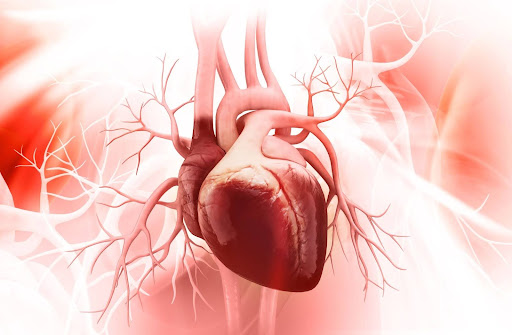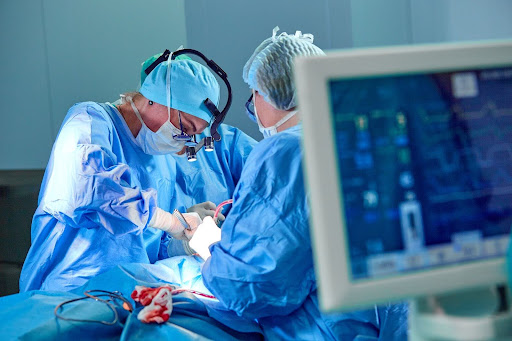
by targetmarket | Mar 29, 2024 | Bloodless Heart Surgery, Heart Surgery
Known as an alternative to open heart surgery, minimally invasive surgery is preferred by many patients. It involves tiny incisions that allow a surgeon to access the heart between the rib bones. This eliminates the need to cut the breastbone. Compared to traditional heart surgery, minimally invasive procedures usually come with less pain and risk as well as a shorter recovery. Here at Minimally Invasive and Bloodless Heart Surgery with Dr. Ciuffo, we’ll dive deeper into the minimally invasive options for high-risk heart surgery. Benefits of Minimally Invasive Heart Surgery There are a variety of advantages of minimally invasive heart surgery. It’s often preferred to high-risk heart surgery because it results in less trauma to the chest and smaller, more discreet scars. It also allows for less blood loss, reduced pain, shorter hospital stays, and a lower chance of infection. How Does Minimally Invasive Heart Surgery Work Every minimally invasive heart surgery is unique. However, most of them involve small incisions in the chest area. You can expect a surgeon to use a special camera device so he can view the heart. During the procedure, you’ll be hooked up to a heart-lung bypass machine so that your blood flow can be maintained throughout the surgery Types Of Minimally Invasive Heart Surgery If minimally invasive heart surgery is an option for you, you’ll work with a surgeon to determine the ideal one. Here’s an overview of some of the most common types of minimally invasive heart procedures: Minimally Invasive Heart Valve Repair: The goal of minimally invasive heart valve repair is to resolve a damaged valve and, in turn, improve... 
by targetmarket | Mar 15, 2024 | Bloodless Heart Surgery
Bloodless heart surgery is performed to prevent blood loss and eliminate the need for blood transfusions and has been shown to provide an easier recovery process. It uses cutting-edge medical techniques that preserve the patient’s own blood. Also known as transfusion-free surgery, it can be a viable alternative for those who need traditional heart surgery but prefer a bloodless approach for personal or religious reasons. At Minimally Invasive and Bloodless Heart Surgery with Dr. Ciuffo, we’re here to take a closer look at what bloodless heart surgery is and what you can expect from the recovery process. How Bloodless Heart Surgery Works Transfusion-free surgery involves advanced techniques that prevent blood loss. In most cases, a surgeon will draw several units of blood, store it in a vessel, and infuse it back into the patient at the end of the procedure. The blood that they draw at the beginning usually gets replaced with a special salt solution, which dilutes the patient’s blood. This ensures that any blood that is lost has fewer red blood cells. A surgeon may also collect bloodshed from bleeding during a case, wash it, and reinfuse it at the end of the procedure. Keep in mind that each bloodless heart surgery is unique and designed for each patient’s particular situation, needs, and preferences. The recovery process also deemed on a case-to-case basis. Reasons to Undergo Bloodless Heart Surgery There are a number of reasons patients choose bloodless heart surgery over traditional heart surgery, which involves blood loss and blood transfusions. It may make sense for those who are concerned about HIV, hepatitis, or other blood-borne diseases... 
by targetmarket | Oct 31, 2023 | Heart Health
Your heart is the engine that powers your body, which means making heart healthy choices should be a top priority. Heart disease remains one of the leading causes of death worldwide, but the good news is that many of the risk factors are controllable. Heart Healthy Tips Here at Minimally Invasive and Bloodless Heart Surgery with Dr. Ciuffo, we will explore some By making simple lifestyle changes and adopting heart healthy habits, you can significantly reduce your risk of heart disease and enjoy a longer, healthier life. tips to keep your heart in optimal condition. 1. Eat a Balanced Diet A heart healthy diet is the foundation of cardiovascular health. Focus on consuming a variety of nutrient-rich foods, including fruits, vegetables, whole grains, lean proteins, and healthy fats. Limit your intake of saturated and trans fats, as they can raise cholesterol levels and increase the risk of heart disease. Additionally, watch your sodium intake to keep your blood pressure in check. Incorporate foods rich in omega-3 fatty acids, like fatty fish, flaxseeds, and walnuts, as they have been shown to reduce the risk of heart disease. 2. Maintain a Healthy Weight Excess weight can strain your heart and increase your risk of heart disease. Calculate your body mass index (BMI) to determine whether you are within a healthy weight range for your height. If you’re overweight or obese, making gradual changes to your diet and increasing physical activity can help you shed pounds and reduce the strain on your heart. 3. Stay Active Regular physical activity is essential for keeping your heart healthy. Aim for at least 150 minutes... 
by targetmarket | Oct 16, 2023 | Benefits of Minimally Invasive Heart Surgery
In the realm of cardiac and thoracic surgeries, advancements in surgical techniques have led to the development of minimally invasive approaches that offer several advantages over traditional open-heart procedures. Two of these minimally invasive techniques, minithoracotomy, and ministernotomy, have gained prominence in recent years. Minithoracotomy Vs. Ministernotomy While both approaches share the common goal of reducing trauma to the patient, they differ in their specific methods and applications. Here at Minimally Invasive and Bloodless Heart Surgery with Dr. Ciuffo, we will explore the key differences between minithoracotomy and ministernotomy to help you better understand these innovative surgical options. Minithoracotomy Minithoracotomy is a minimally invasive surgical approach that involves making a small incision between the ribs to access the thoracic cavity. It is commonly used for various cardiac and thoracic procedures, including but not limited to coronary artery bypass grafting (CABG), mitral valve repair or replacement, and lung surgeries. Incision Placement One of the primary distinctions of minithoracotomy is the location of the incision. The surgeon makes a small (typically 2-4 inches) horizontal incision on the lateral side of the chest, between the ribs, often below the nipple line. This approach allows access to the heart or lungs without splitting the breastbone (sternum). Use of Rib Spreaders Minithoracotomy may require the use of rib spreaders to gently separate the ribs and create a working space. While this temporarily widens the ribcage, it is less traumatic than a full sternotomy. Versatility Minithoracotomy is versatile and can be used for various cardiac and thoracic procedures. Surgeons can access different areas of the heart and lungs, depending on the specific surgical goal. Reduced... 
by targetmarket | Sep 29, 2023 | Bloodless Heart Surgery, Dr. Giovanni B Ciuffo
Heart surgery, also known as cardiac surgery, is a medical procedure that has saved countless lives by treating various heart conditions. Traditionally, heart surgery involves the use of blood transfusions to replace lost blood during the procedure. However, in recent years, there has been a growing interest in bloodless heart surgery, a technique that eliminates or significantly reduces the need for blood transfusions. Bloodless Heart Surgery While bloodless heart surgery offers numerous advantages, it’s essential to acknowledge patients need to be well-informed about the process and decide whether it is a good option for their individual needs. Here at Minimally Invasive and Bloodless Heart Surgery with Dr. Giovanni B. Ciuffo, we will explore everything you need to know about bloodless heart surgery, from its benefits to the techniques used. Why Bloodless Heart Surgery? Bloodless heart surgery care is an increasingly popular choice for all patients who need surgery in a growing number of medical institutions. It is interesting to note that more and more patients are becoming interested in bloodless heart surgery, regardless of their religious beliefs. It turns out that avoiding the transfusion of blood products has significant clinical benefits. Bloodless heart surgery has gained popularity due to several compelling reasons: Reduced Risk: Blood transfusions come with potential risks, including transfusion reactions, infections, and compatibility issues. Bloodless heart surgery eliminates these risks, making it a safer option for some patients. Keep The Immune System Strong: A downfall of blood transfusions is that they can weaken the immune system and cause it to be less reactive. A weak immune system will not be able to fight infections or cancer...





